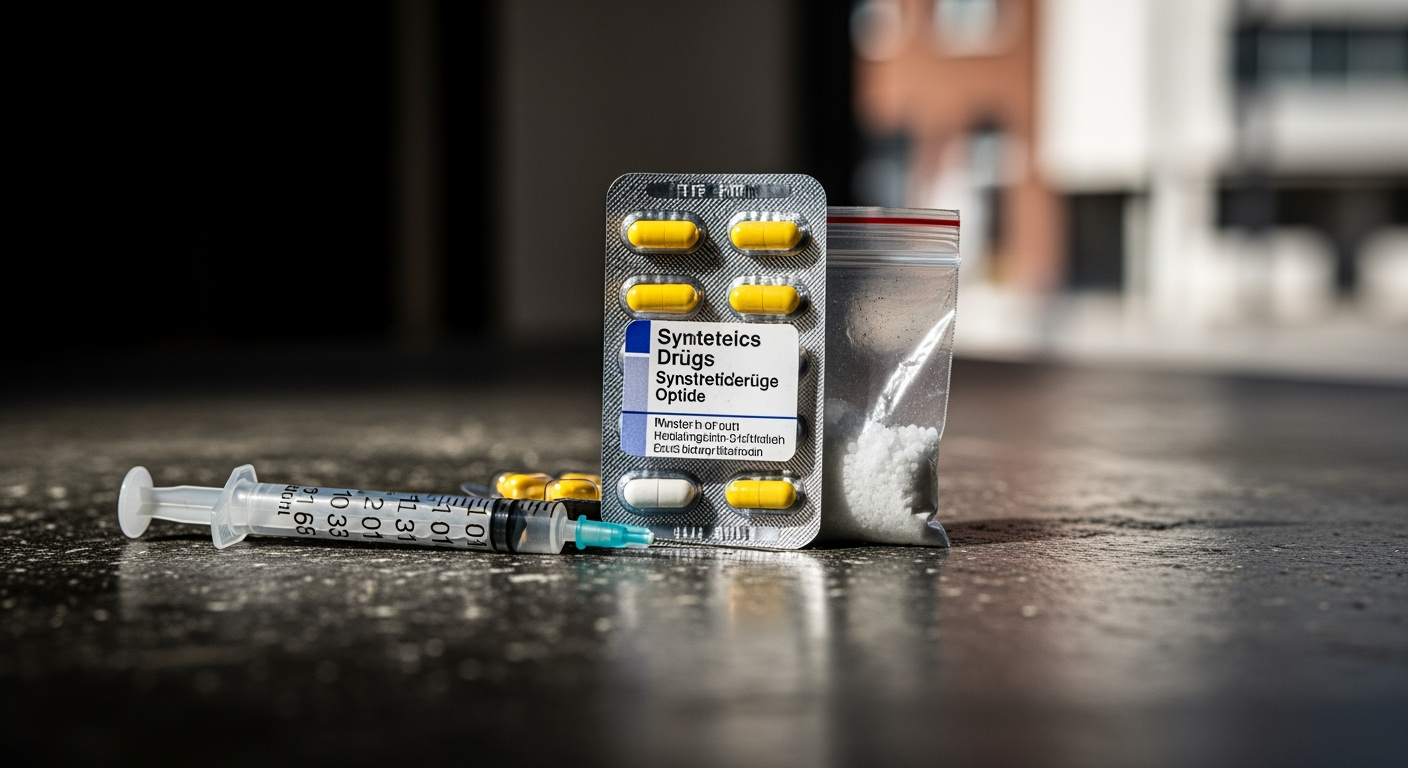Related Articles

Ontario Halts Anti-Tariff Campaign After Trump Ends Trade Talks, Sparking Diplomatic Fallout




Germany is confronting an escalating drug crisis marked by a concerning surge in synthetic substances and opioids, leading to a significant increase in drug-related deaths nationwide. Recent statistics reveal that 2023 saw 2,227 drug-related fatalities, a 12% increase from the previous year, and the highest figure since 1973. Public health officials and law enforcement agencies are sounding the alarm, particularly over the anticipated influx of highly potent synthetic opioids like fentanyl and nitazenes, which threaten to reshape the country's illicit drug landscape.
The upward trajectory in drug-related deaths underscores a disturbing trend across Germany. Beyond the national figures, local data highlights the severity of the situation; Berlin alone reported a record high in drug-related deaths in 2024, with a particularly troubling 14% increase among individuals under 30. This rise is attributed to a complex interplay of factors, including the availability of new and more dangerous substances and evolving consumption patterns. The overall number of drug-related deaths has increased annually since 2009, indicating a sustained and deepening crisis.
The illicit drug market in Germany is experiencing profound changes, with traditional substances being supplemented or replaced by novel synthetic compounds. These new psychoactive substances (NPS) often pose unknown and severe health risks due to their unpredictable potency and composition. The ease of production and online distribution channels have facilitated the rapid spread of these drugs, further complicating efforts to control their proliferation.
A major concern for German authorities is the impending surge of synthetic opioids, notably fentanyl and its even more dangerous analogues like nitazenes. Addiction experts predict that these highly potent substances could flood the German market as early as 2025. This anticipation is largely a consequence of the Taliban's drastic enforcement of a 95% ban on poppy cultivation in Afghanistan, historically the world's largest exporter of opium and heroin. With heroin reserves expected to last only through the current year, the resulting deficit is likely to be filled by synthetic alternatives, mirroring patterns observed in other global drug markets.
Evidence suggests that fentanyl is already making its presence felt as an adulterant in heroin. A project by the German AIDS Help, which conducted rapid fentanyl tests on 1,401 heroin samples in late 2023, detected synthetic opioids in 3.6% of them. Isolated positive results were found with regional concentrations in cities such as Hamburg, Düsseldorf, Münster, Berlin, Frankfurt am Main, Hanover, and Wuppertal, indicating an emerging threat. The United Nations Office on Drugs and Crime (UNODC) has also warned about nitazenes, a class of synthetic opioids considered even more lethal than fentanyl, which have been detected in several high-income countries, contributing to increased drug-related deaths.
Beyond opioids, Germany is also grappling with other synthetic compounds. In June 2024, German authorities banned HHC (hexahydrocannabinol) and other synthetic cannabinoids due to significant health risks and their potential for dependence. While legislation like the New Psychoactive Substances Act (NpSG) aims to combat these new substances by banning entire groups of compounds, the market supply of synthetic cannabinoids does not appear to have been significantly reduced, despite a decrease in reported intoxications.
While new synthetic threats emerge, established illicit substances like methamphetamine and cocaine continue to pose significant challenges. Crystal meth use, in particular, remains on the rise across Germany, especially in eastern federal states bordering the Czech Republic, where much of the drug is produced. Seizures of crystal meth have seen an increase, with 40 kilograms confiscated in 2011 and 77 kilograms in 2013, illustrating the growing prevalence. The drug is also increasingly produced in the Netherlands, from where it is trafficked across Europe. The number of first-time users of crystal meth reportedly increased by 51% in 2012, surpassing heroin in new users that year.
Cocaine and crack cocaine also contribute substantially to the public health crisis. Over 400 deaths in 2023 were attributed to cocaine and crack, and seizures of cocaine between 2018 and 2023 surged by approximately 750%. Major port cities like Hamburg have become critical entry points for cocaine into Europe, with large quantities intercepted by customs officials. Federal Drug Commissioner Hendrik Streeck has identified crack cocaine as a particularly concerning drug due to its high addictiveness and the current lack of effective medical treatments in Germany.
Recognizing the severity of the evolving drug landscape, German authorities are implementing a multi-pronged approach to prevention, intervention, and harm reduction. Unlike the United States, which has experienced a devastating opioid crisis partly fueled by mass prescription practices, Germany's strict regulation of opioid prescriptions under the Narcotics Act has largely prevented a similar crisis from taking hold. This regulatory framework requires special prescriptions and reporting to the Federal Opium Agency, deterring over-prescription.
In preparation for the anticipated synthetic opioid wave, cities across Germany are developing emergency plans, training emergency services and hospital staff, and expanding drug testing programs to more accurately detect potent opioids. Projects like "SO-PREP" (synthetic opioid preparation) and "so-par" (Synthetic Opioids — Prepare and Response), initiated by addiction researchers, aim to equip municipalities with strategies such as early warning systems, internet monitoring, drug checking services, supervised drug consumption rooms, naloxone distribution, and opioid agonist therapy. These initiatives are seen as crucial to mitigating the impact of new substances and preventing a crisis on par with those seen elsewhere.
Federal Commissioner for Addiction and Drug Issues Hendrik Streeck has emphasized the importance of a nationwide monitoring and early warning system to alert police, emergency services, addiction care providers, and users in real-time about newly emerging dangerous substances. This proactive stance, focusing on public health and harm reduction, aims to learn from past failures and prevent Germany from being caught unprepared.
The surge in synthetic drugs and opioids presents a formidable public health and safety challenge for Germany. While the nation's robust healthcare system and proactive drug policies have historically mitigated the scale of addiction compared to other countries, the dynamic nature of the illicit drug market demands continuous vigilance and adaptation. The alarming rise in drug-related deaths and the increasing presence of highly potent synthetic substances underscore the urgency of these efforts.
The strategy forward involves sustained investment in early warning systems, comprehensive prevention programs, accessible treatment options, and expanded harm reduction services. By integrating legislative measures with public health initiatives and international cooperation, Germany aims to navigate this evolving crisis. The commitment to understanding and responding to the complex and rapidly changing drug landscape will be critical in protecting communities and saving lives from the increasing threat of synthetic drugs and opioids.